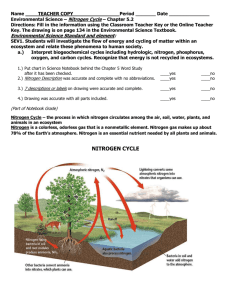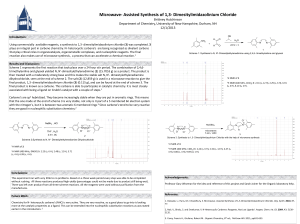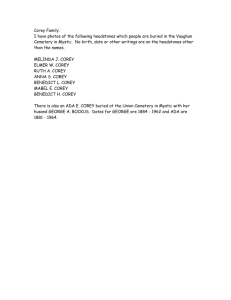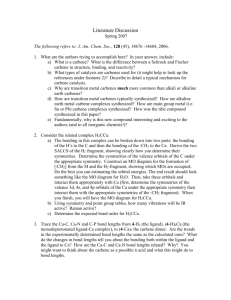Problem Set #10 Due Date: April 16 th , 2014 by 12:00 am
advertisement
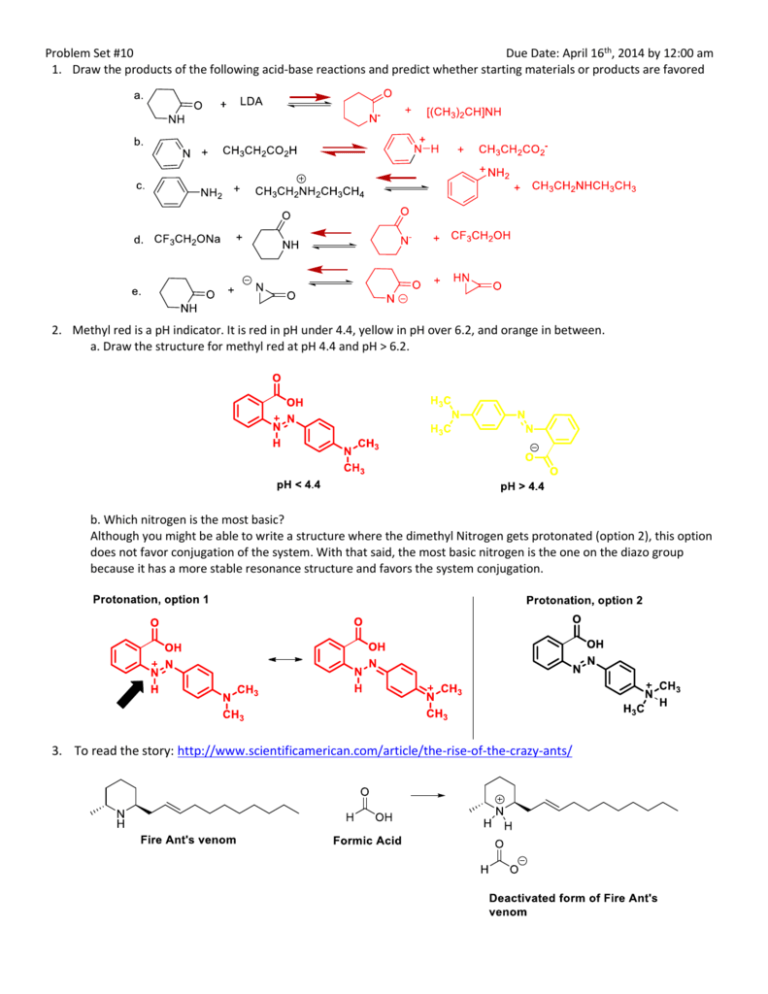
Problem Set #10 Due Date: April 16th, 2014 by 12:00 am 1. Draw the products of the following acid-base reactions and predict whether starting materials or products are favored 2. Methyl red is a pH indicator. It is red in pH under 4.4, yellow in pH over 6.2, and orange in between. a. Draw the structure for methyl red at pH 4.4 and pH > 6.2. b. Which nitrogen is the most basic? Although you might be able to write a structure where the dimethyl Nitrogen gets protonated (option 2), this option does not favor conjugation of the system. With that said, the most basic nitrogen is the one on the diazo group because it has a more stable resonance structure and favors the system conjugation. 3. To read the story: http://www.scientificamerican.com/article/the-rise-of-the-crazy-ants/ 4. Draw an amine that contains a nitrogen atom with a high barrier for inversion or that cannot undergo inversion. 5. Suggest a way to convert the vinyl-terminated polyisobutylene into an bis(N-arylimidazolium salt (an N-heterocyclic carbene precursor useful as a ligand for recoverable, reusable catalysts). "Polyisobutylene-Anchored N-Heterocyclic Carbene Ligands", C. Hongfa, H.-L. Su, H. S. Bazzi and D. E. Bergbreiter, Org.Lett. 2009, 11, 665-667. 6. The two compounds below differ in basicity by a factor of 1010. Which is more basic? Why? 7. Provide mechanisms for the following reactions. a. b. c. d. 8. The Corey – Chaykovsky Aziridination reaction is shown below. Using this as your key transformation, write down a sequence of reactions to get to from A to B. 9. Ortho-quinone A has been previously used by Corey and coworkers to successfully accomplish the oxidation of primary amines to aldehydes and ketones as shown below. Write out a detailed mechanism and identify the intermediate B. 10. Suggest monomer precursors for the following condensation polymers.








